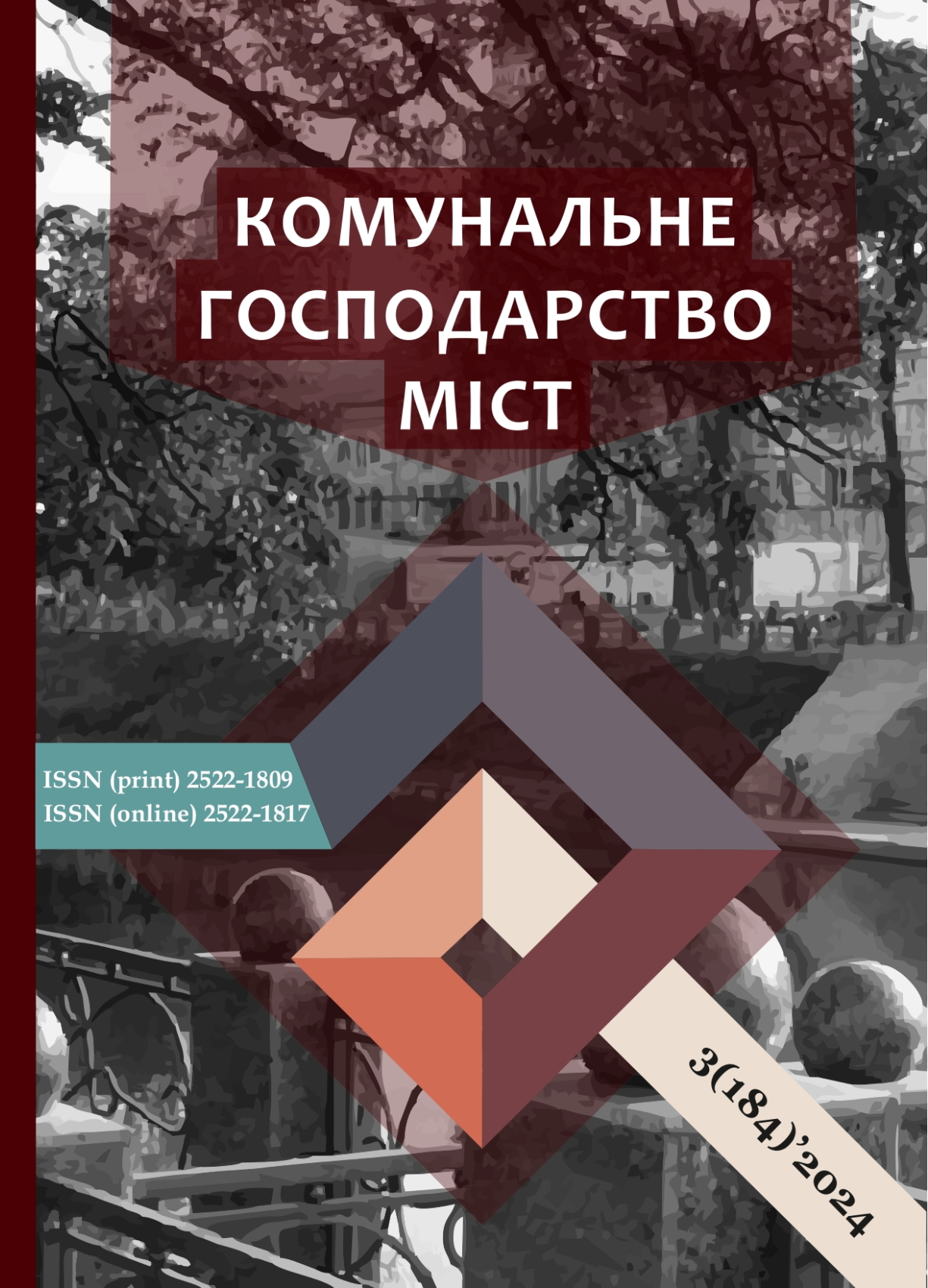APPLICATION OF LASER SCANNING DATA IN SOLVING TERRITORIAL PLANNING PROBLEMS
DOI:
https://doi.org/10.33042/2522-1809-2024-3-184-147-151Keywords:
data, laser scanning, territorial planning, potential, accuracy, efficiency, analysis, prospectsAbstract
The article aims to thoroughly investigate and analyse the possibilities of using laser scanning data in spatial planning. The main goal is to identify the potential of this technology to improve the efficiency and accuracy of planning processes, particularly in the urban environment.
The LiDAR (Light Detection and Ranging) data integration into territorial planning is fundamental to modern urban management frameworks. Using the precise and comprehensive geospatial data obtained through LiDAR scanning provides a reliable basis for conducting in-depth analysis and strategic decision-making in territorial development initiatives.
LiDAR technology offers unparalleled accuracy and detail, enabling urban planners to effectively map and visualise various aspects of urban environments, including topography, land use patterns, infrastructure, and natural features. With this extensive information, stakeholders can gain valuable insights into existing spatial dynamics, identify potential areas for development or conservation, and assess the impact of proposed projects on the surrounding landscape.
Moreover, integrating LiDAR data facilitates the optimisation of urban resource management processes. City authorities can streamline land use planning, infrastructure development, and environmental management efforts by accurately delineating land plots and infrastructure networks. In turn, it promotes more efficient allocation of resources, minimises operational costs, and enhances overall urban sustainability.
Furthermore, LiDAR technology is crucial in enhancing urban resilience and adaptability. Generating high-resolution elevation models and floodplain maps allows urban planners to identify areas prone to natural hazards such as floods, landslides, or coastal erosion. With this knowledge, city planners can implement proactive measures to mitigate risks, improve disaster preparedness, and safeguard community well-being.
In contemporary urban challenges, such as climate change and rapid urbanisation, LiDAR technology is becoming increasingly indispensable. By embracing LiDAR technology, urban planners can develop more resilient and sustainable cities better equipped to withstand and adapt to evolving environmental, social, and economic pressures.
In essence, the effective utilisation of LiDAR data in territorial planning enhances spatial planning accuracy and fosters innovation, resilience, and sustainability within urban environments. By harnessing the power of LiDAR technology, cities can pave the way toward a more prosperous, equitable, and resilient future for generations to come.
References
Colomina, I., & Molina, P. (2017). Unmanned aerial systems for photogrammetry and remote sensing: A review. ISPRS Journal of Photogrammetry and Remote Sensing, 115, 1-18. DOI: 10.1016/j.isprsjprs.2014.02.013.
Petrakovska O., Lizunova A. (2009). Urban planning in private property conditions in Ukraine. International Academic Group On Planning, Law And Property Rights. Third Conference. Aalborg, Denmark., planning-law2009.land.aau.dk/doc/.
James, M. R., & Robson, S. (2014). Straightforward reconstruction of 3D surfaces and topography with a camera: Accuracy and geoscience application. Journal of Geophysical Research: Earth Surface, 119(4), 562-585. DOI: 10.1002/2013JF002843.
Nesterenko, S., Mishchenko, R., Shchepak, V., Shariy, G. (2020). Public Cadastral Maps as a Basis for a Construction of the Building General Layout. Proceedings of the 2nd International Conference on Building Innovations. ICBI 2019. Lecture Notes in Civil Engineering, vol 73. Springer, Cham,161-170. https://doi.org/10.1007/978-3-030-42939-3_18
El-Rabbany, A.E-S. (1994). The effect of physical correlations on the ambiguity resolution and accuracy estimation in GPS differential positioning. Dept. of Geodesy &Geomatic Eng., University of New Brunswick, Canada, Tech. rept. No 170, 161. URL: https://unbscholar.lib.unb.ca/islandora/object/unbscholar%3A8565.
Mingming W., Nesterenko S., Shterndok E.(2019).Modelling of the Parcel Pattern Impact.International science and technology conference "Earth science". IOP Conf. Series: Earth and Environmental Science, 272. doi: 10.1088/1755-1315/272/3/032085
Larsson,G. (1991).Land registration and Cadastral Systems: tools for land information and management. Esex: Longman Scientific and Technical, 387
Teunissen, P.J.G., Bock, Y., Beutler, G., et al. (1998). GPS for geodesy. Berlin, Springer. URL: https://catalogue.nla.gov.au/
Ranada, P. (2014). PH named country most affected byclimate change in 2013. Rappler. December 3. Retrieved from: https://www.rappler.com/science-nature/environment/76868-philippines-tops-global-climate-risk-index
Nesterenko S., Mishchenko R., Shchepak V., Shariy G. Public Cadastral Maps as a Basis for a Construction of the Building General Layout. In: Onyshchenko V., Mammadova G., Sivitska S., Gasimov A. (eds) Proceedings of the 2nd International Conference on Building Innovations. ICBI 2019. Lecture Notes in Civil Engineering, vol 73. Springer, Cham, 2020. – P. 161-170.
Downloads
Published
How to Cite
Issue
Section
License
The authors who publish in this collection agree with the following terms:
• The authors reserve the right to authorship of their work and give the magazine the right to first publish this work under the terms of license CC BY-NC-ND 4.0 (with the Designation of Authorship - Non-Commercial - Without Derivatives 4.0 International), which allows others to freely distribute the published work with a mandatory reference to the authors of the original work and the first publication of the work in this magazine.
• Authors have the right to make independent extra-exclusive work agreements in the form in which they were published by this magazine (for example, posting work in an electronic repository of an institution or publishing as part of a monograph), provided that the link to the first publication of the work in this journal is maintained. .
• Journal policy allows and encourages the publication of manuscripts on the Internet (for example, in institutions' repositories or on personal websites), both before the publication of this manuscript and during its editorial work, as it contributes to the emergence of productive scientific discussion and positively affects the efficiency and dynamics of the citation of the published work (see The Effect of Open Access).

